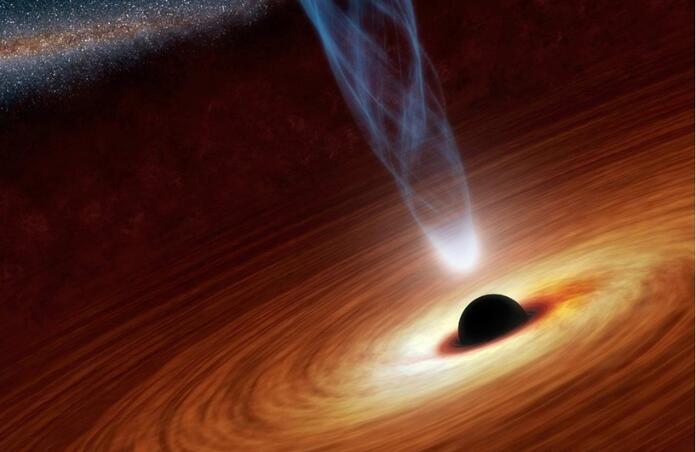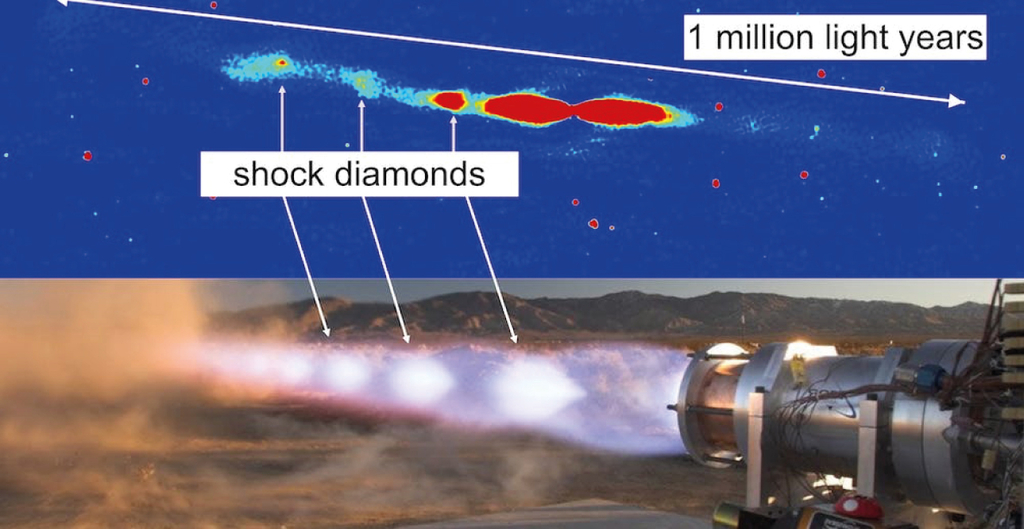Astronomers Detect Enormous Black Hole Jet in Nearby galaxy

One of the largest black hole jets has been detected by astronomers in Western Sydney, spanning almost one million light years across. The gigantic jet was found in the centre of the neighbouring galaxy NGC2663, located 93 million light years away which isn’t as far away as it seems- if the Earth was our house, NGC2663 would be a few towns away.
Black hole jets are formed when particles such as electrons travel close to the speed of light, following the paths shaped by magnetic fields surrounding them. Matter, under the strong influence of gravity, falls towards the black hole and a small percentage of particles are accelerated to these high speeds and thrown out in two narrow beams parallel to the axis of rotation of the black hole. This interesting phenomenon is thought to be the source of the fastest travelling particles in the universe: cosmic rays.
Observations of the jet were made using CSIROs Australian Square Kilometre Array Pathfinder (ASKAP) located in Western Australia. This comprises a network of 36 linked radio dishes which make up a single extremely powerful telescope. The radio waves display a powerful jet of matter that is being shot out of the galaxy by its central black hole. The stream of material is around 50 times larger than the galaxy, which is so massive that if we could observe this with the naked eye it would be bigger than the moon! Many other black hole jets have been detected before, however the size and closeness of NGC2663 makes this one of the largest known black hole jets in the sky.
The research, which is led by Velibor Velovic of Western Sydney university, has been accepted for publication in the journal Monthly Notices of the Royal Astronomical Society (MNRAS) and can be read here. Observations from the Evolutionary Map of the Universe (EMU) survey conducted by ASKAP has detected matter between galaxes pushing back on the sides of the black hole jet, which is a very similar process to the effect observed in jet engines. As the exhaust plume rips through the atmosphere, it’s pushed from each side by the ambient pressure, causing the jet to expand and contract. Bright spots are observed at regular periods in the jet where compression occurs, producing what are called ‘shock diamonds’ due to the shape.

Shock diamonds have been observed in smaller jets that are more comparable in size to their galaxy, where the jets hit into dense clouds of gas, lighting them up as they burrow through. However, it is harder to observe jets being compressed from the side since this is more of a subtle effect and hasn’t been seen on such vast scales until now with NGC2663. This means that there’s enough intergalactic matter around NGC2663 to push against the sides of the jet and the jet heats and pressurises the matter, forming a cycle: intergalactic matter is fed into the galaxy, the galaxy makes a central black hole, which in turn spews out material in jets and slows the supply of matter into galaxies.
The EMU survey is continuing to scan the sky, and hopefully will make more interesting and exciting discoveries that can help us better understand how black holes influence the galaxies that form around them.
--
Cover image: NASA/JPL-CALTECH
Image credits: Mike Massee/XCOR
